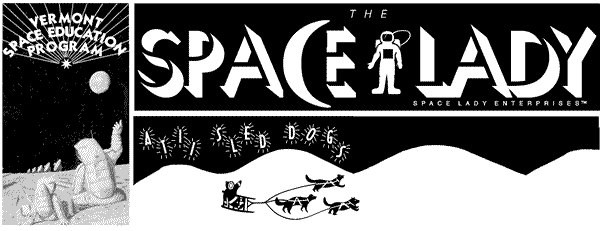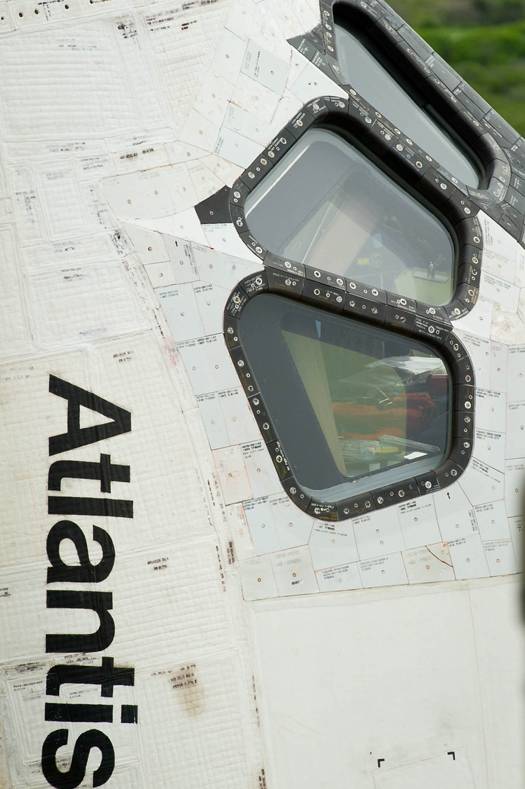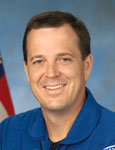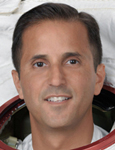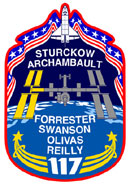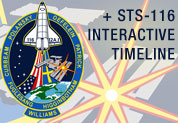| About Gail & VSEP | |
| Current Space Missions | |
> Space Education News & Links |
|
May 25, 2012 Update
Frequent information, resources and Internet links related to sled dogs and space education are still being posted on Facebook and Twitter (@9dognight).
Nine months later, and sad to report, but our January 2012 update is still correct. If we're lucky, maybe the rebuilding, reconstructing, etc. will be done by the Aug. 28th one year anniversary of Tropical Storm Irene. Time will tell. None-the-less, we have no programs or skijoring gear to offer to the public right now or this spring/summer season.
We appreciate the contacts and interest we've received from folks via the phone and email. We are sincerely disappointed and really sorry that we can't accommodate the requests for summer programs for libraries, camps, etc. We hate to have to turn them down but have no choice right now! Time and energy is limited. Gas prices and dog truck repairs are expensive. When it rains it pours--but the good news is that our 7 dogs and 1 cat are happy and well. The 2 alpha humans here still laugh, smile and have gratitude, knowing we're lucky and fortunate. There are lots of folks hurting with truly horrible, enormous losses. We're not complaining--just explaining.
Posted on Thurs., July 21, 2011
LAST FLIGHT OF ATLANTIS AND THE SPACE SHUTTLE PROGRAM
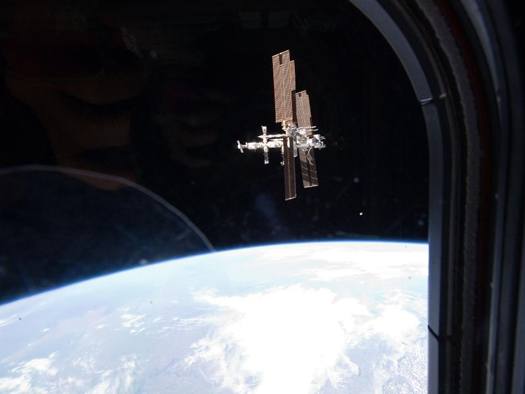
Last view of ISS as seen from Atlantis' window. Last view taken by a Space Shuttle as the shuttle program comes to an end with early morning landing on Thurs., July 21, 2011. (photo submitted by Gail Breslauer, Vt. Space Education Program Photo Credit: NASA and crew of Atlantis, STS-135
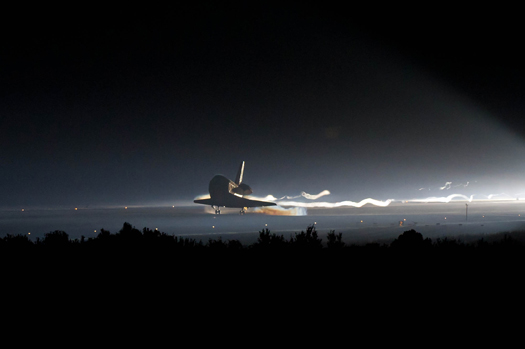
A beautiful safe landing and return for Atlantis! Dreams were made, inspiration and resources provided and shared, innovations via spin off technologies created and used globally in our daily lives--all due to the Space Shuttle program. Thank you, to NASA and all the folks affiliated in every way with this program for all that you have given, done and provided for our country and our world!
Here's an incredible array of the history of the Space Shuttle program--in order of each flight --with powerful images right up to today's landing! (Link in case the embed doesn't work for you.: <http://www.youtube.com/NatureVideoChannel?gl=GB&hl=en-GB>)
Well done Nature Video Channel! Thank you for posting and sharing this phenomenal music video and homage to America's incredible ingenuity, determination and achievements via this incredible program. You've chronicled the history of the highs and lows with grace and sensitivity.
Thank you again and again, NASA, for the incredible ride. I still want to go--some how, some way, some day if I'm really lucky. I'm not done yet--there's more to come and there's lots more to share!
STS-135: The Final Mission of the Space Shuttle Program
My techie has been far too slow (to put it mildly) to post anything new on this website despite my sending him regular updates. (He's been busy with his own writing and work projects.) I have been posting all news, information, new links, educational resources, programs, and educational opportunities for students and educators, competitions and deadlines, etc. on my Facebook page. I have also been tweeting during STS-135, Atlantis's final mission and the final mission of the 30-year space shuttle program. (Successfully launched at 11:29 a.m. EDT on July 8, 2011 from NASA's Kennedy Space Center.) This website will be updated when possible, but in the meantime, please find me on Facebook and also check my Twitter feed (@9dognight, #vtspaceeducation).
The closeup of Atlantis on the launchpad below shows the id number of each tile in addition to the Nomex quilting. You can even see astronaut orange on the flight-deck. Click on the image to make it even larger. I love this picture!
The end of the Space Shuttle Program is not the end of my work with students and educators. This is the end of one particular era in U.S. space exporation but exploration will continue, whether the U.S. has the foresight to do it quickly, or others jump ahead as leaders. For now we have no American spacecraft to take our astronauts to the ISS or anyplace else. After Atlantis departs the ISS around July 20, 2011, U.S. astronauts will be hitching their rides onboard tiny Russian Soyuz spacecraft (and the U.S. will be paying for the privilege).
Click here for information on STS-118, Space Shuttle Endeavour, currently scheduled to launch on August 7, 2007. August 8, 2007. This mission to the International Space Station will have the first educator astronaut, Barbara Morgan, flying with her crewmates. Morgan, a former 2nd-3rd grade teacher from Idaho, has been waiting and training for 21 years for her flight.
STS-119: WHAT'S SPECIAL ABOUT THIS MISSION? TWO ASTRONAUTS ARE EDUCATORS!

This all male crew has has two educators who will be on board the Shuttle orbiter Discovery flying to the International Space Station carrying the final solar panels that will be installed on the ISS. Discovery is scheduled to launch on March 12 (pending a flight review on March 4 after rescheudling due to fuel nozzle problems).
Joe Acaba and Ricky Arnold are now Mission Specialist astronauts who were selected for astronaut training in 2004. After successfully completing the two-year AsCan training (Astronaut Candidate) they officially became astronauts in 2006, had various assignments and then began specific training for their STS-119 mission. They applied to become NASA astronauts through the Educator Astronaut program which requires degrees and experience in science and/or mathematics as well as classroom teaching experience.
Acaba and Arnold follow former astronaut Barbara R. Morgan who was the first educator to be selected as an official astronaut and flew on mission STS 118 in August 2008 after a 21-year wait for her flight (post Challenger tragedy).
On a personal note: Acaba and Arnold are both very nice, outgoing, friendly guys with interesting and impressive backgrounds that I was lucky to meet while I attended Morgan's launch. They represent all educators very well! Joe Acaba earned a bachelor's and a master's in geology and has middle school and high school math and science teaching experience. Ricky Arnold earned a bachelor's degree in science, completed the teacher certification program and then earned a master's in marine, estuarine and environmental science. He has teaching experience at middle schools and high schools around the world. As an astronaut, in August 2007 he served as a mission specialist for the 13th NASA Extreme Environments Mission Operations, known as NEEMO, living and working in an underwater ocean laboratory simulating a lunar colony for NASA's planned Return to the Moon missions.
Their biographies contains more details. Click on their photo for their bio.
Click here for more info about the entire crew.
Click here for information about the STS 119 mission.
STS-119 Space Shuttle Mission: Resources for Educators
Click here for LOTS of links and classroom activities for educators and students of various ages and grade levels related to the STS 119 mission.
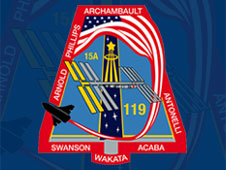
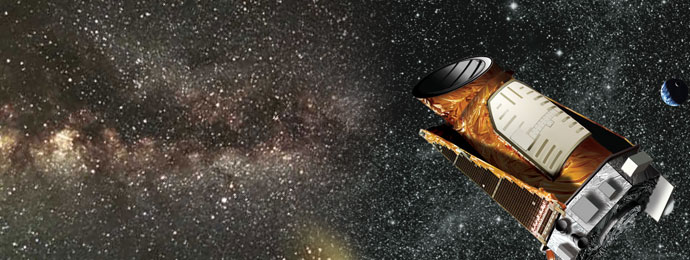
NASA'S KEPLER MISSION TO SEEK OTHER EARTHS
Posted Feb. 28, 2009:
NASA's Kepler spacecraft will soon begin a journey to search for worlds that could potentially host life. Kepler is currently scheduled to launch on March 5 and is the first mission with the ability to find planets like Earth--rocky planets that orbit sun-like stars in a warm zone where liquid water could be maintained on the surface.
Click here for more information about the Kepler mission.
TRIPLE FLYBY ALERT on TUESDAY, MARCH 25th:
Space shuttle Endeavour has undocked from the International Space Station and the two spaceships are now orbiting Earth. This means that some lucky sky watchers may be able to see a a series of rare *triple* flybys on Tuesday, March 25th.
Three spacecraft are involved. The European Space Agency's Jules Verne ATV cargo carrier is flying 2000 kilometers ahead of the ISS and space shuttle Endeavour.
Jules Verne is about as bright as a 1st magnitude star. Even brighter is the space shuttle and space station that will follow Jules Verne across the starry sky about 4 minutes later. The satellite Genesis 1 is also visible this week. Hope for clear skies 'cause this will be really special!
CLICK HERE to find out when and where to look in the sky.
STS-123: SPACE SHUTTLE ENDEAVOUR SET TO LAND WEDNESDAY, MARCH 26
What a great mission this has been so far! Five space walks, delivery and attachment of the first segment of the Japan Aerospace Exploration Agency's Kibo science laboratory and delivery and attachment of the Canadian Space Agency's large, two-armed robotic system, known as Dextre. (A very cool robotic system!)
The crew of the space shuttle Endeavour closed the hatch and separated from the International Space Station on Monday evening, March 23rd at 8:25 p.m. EDT, completing 11 days, 20 hours and 36 minutes of docked operations.
They are expected to complete their 16-day flight with a landing at NASA's Kennedy Space Center on Wednesday, March 26.
NASA managers will evaluate weather conditions at Kennedy before permitting Endeavour to return to Earth. Wednesday landing opportunities at Kennedy are at 7:05 p.m. EDT and 8:39 p.m. EDT.
Two hours after landing, NASA officials will hold a media briefing to discuss the mission. The participants will be: Bill Gerstenmaier, NASA associate administrator for Space Operations; Kaoru Mamiya, Japan Aerospace Exploration Agency vice president; Canadian Space Agency representative Mike Leinbach; and the NASA space shuttle launch director.
After touchdown, the astronauts will undergo physical examinations and meet with their families. The STS-123 crew is expected to hold a news conference at 1:30 p.m. Thursday, March 27. Both news events will be broadcast live on NASA Television.
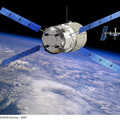
NASA WILL AIR "JULES VERNE ATV's" (NEW SPACECRAFT'S) MANEUVERS AND DOCKING TO SPACE STATION
WHEN: NASA Television will broadcast the most critical maneuvers on March 31 and April 3, with commentary from NASA's Johnson Space Center in Houston
WHAT: The European Space Agency's Jules Verne Automated Transfer Vehicle (ATV) was launched less than 3 weeks ago. It is a "robotic mission" (NO humans onboard).
* It is set to begin a series of automated approaches and make an eventual docking with the International Space Station.
HOW: During the docking, the spacecraft will be controlled by engineers at the ESA ATV Control Center in Toulouse, France, working with flight controllers at the Russian Mission Control Center in Korolev, outside Moscow, and at Johnson.
WHEN: March 31: NASA TV coverage will begin at 10 a.m. EDT as the ATV begins an approach to the station from two miles away. A series of engine firings will bring the cargo ship to within 36 feet of the station before the Expedition 16 crew sends an abort command to move the ATV away from the complex for its final approach three days later. These maneuvers will test all of the ATV's vital systems, which are required for a safe automated linkup to the station.
April 3: NASA TV coverage will begin at 8 a.m. EDT as the cargo ship closes in for docking to the rear port of the station's Zvezda service module. Docking is scheduled for 9:40 a.m. A briefing with NASA Flight Director Brian Smith will air on NASA TV at 11:30 a.m. Questions will be taken from media at participating NASA locations.
The ATV will remain at the space station until early August. After undocking, it will perform a deorbit maneuver and burn up in Earth's atmosphere. Additional ATVs are planned to launch in the future.
CLICK 7ERE for NASA TV streaming video, downlink and scheduling information.

Mission Patch for STS-123
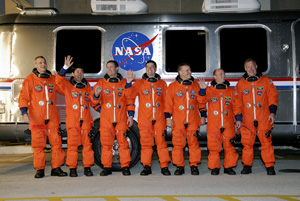
Before getting on NASA's silver Astrovan for the ride to the launch pad. From left are Mission Specialists Rick Linnehan, Japanese astronaut Takao Doi, Mike Foreman and Robert L. Behnken, Pilot Gregory H. Johnson, Mission Specialist Garrett Reisman and Commander Dominic Gorie. Riesman will remain on the International Space Station as a flight engineer.
Photo credit: NASA/Kim Shiflett
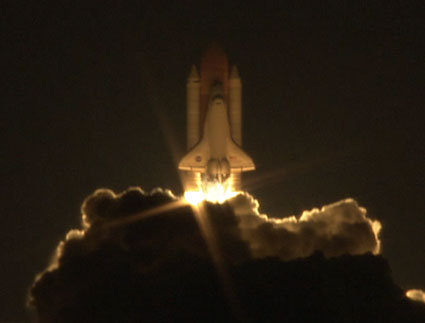
Posted March 11, 2008:
Endeavour's Spectacular Night Launch to the International Space Station
While most of you were tucked into bed, slumbering away, I was awake, on t the Internet and watching the live video streaming of the launch of the Space Shuttle Endeavour. The launch lit up the dark night sky at the NASA Kennedy Space Center in Florida at 2:28 a.m. EDT (and along the Eastern coast).
Thus began the STS-123 mission to the International Space Station (ISS).
This will be a 16-day mission. Endeavour's seven astronauts will work with the three-member space station crew and ground teams around the world to install the first section of the Japan Aerospace Exploration Agency's Kibo laboratory and the Canadian Space Agency's two-armed robotic system, known as Dextre.
STS-123 is the longest shuttle mission to the station and will include a record five shuttle spacewalks at the orbiting laboratory, delivery of a new crew member to the ISS and the return of another astronaut after nearly seven weeks aboard the station.
Joining Commander Dominic Gorie on STS-123 are Pilot Gregory H. Johnson and Mission Specialists Robert L. Behnken, Mike Foreman, Rick Linnehan, Garrett Reisman and Japan Aerospace Exploration Agency astronaut Takao Doi. Reisman will replace current ISS crew member Leopold Eyharts, who has lived on the station since early February. Reisman will return to Earth on shuttle Discovery's STS-124 mission, targeted for launch on May 25, 2008.
Endeavour's cargo will help continue the station's assembly. The Japanese Experiment Logistics Module-Pressurized Section, or ELM-PS, will hold experiment samples, maintenance tools and other spare items. Dextre can be attached to the station's robotic arm to handle smaller components typically requiring a spacewalking astronaut. At the tip of each arm is a "hand" that consists of retractable jaws used to grip objects.
Click here to see NASA's continuous television and Internet coverage of Endeavour's mission, which is the 122nd shuttle flight, the 21st for Endeavour and the 25th shuttle mission to the station.
Click here for more mission information about STS-123.
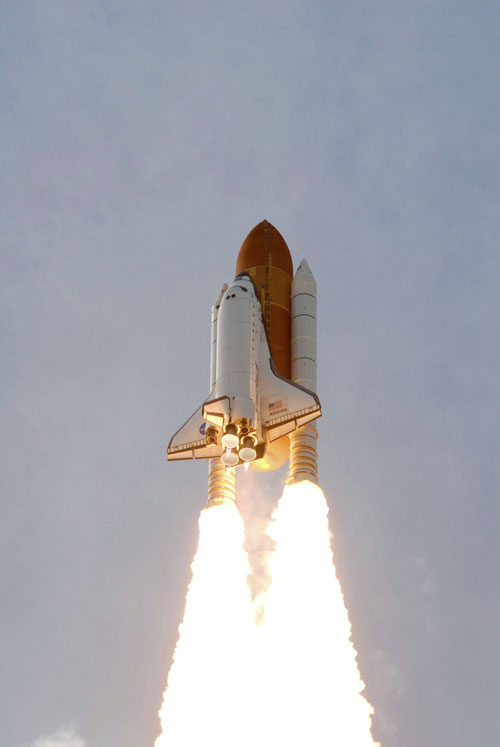
Atlantis's STS-122 crew begins "The Voyage of Columbus"
Updated on Feb. 9, 2008:
Space Shuttle Atlantis' "Voyage of Columbus" Begins Mission to the Space Station--and Docks There Today!
What a gorgeous launch and incredible camera photograhy! The latest camera technology and positioning of the cameras provides extraordinary views and images! It's always great to be at the NASA Kennedy Space Center to watch a launch (as I did for Endeavour in August), but this was good, too!
All went well as I watched the live video stream as the space shuttle Atlantis and its seven-member crew lifted off at 2:45 p.m. EST on Thursday, Feb. 7 from NASA's Kennedy Space Center to begin the STS-122 mission to the International Space Station (ISS). Atlantis will arrive at the ISS and doc there today (Feb. 9). Docking is scheduled to take place at 12:25 p.m. EST today.
"During the 11-day flight, Commander Steve Frick and his six crewmates will install the European Space Agency's Columbus laboratory on the station. Columbus will expand the research facilities of the station and provide scientists around the world with the ability to conduct a variety of life, physical and materials science experiments. The mission will include three spacewalks, delivery of a new crew member to the station and the return of another astronaut after nearly four months aboard the complex.
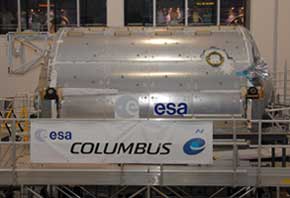
Columbus Research Lab (click here for more information)
Joining Frick on STS-122 are pilot Alan Poindexter and mission specialists Leland Melvin, Rex Walheim, Stanley Love and European Space Agency astronauts Hans Schlegel and Leopold Eyharts. Eyharts will replace current station resident Dan Tani, who has lived on the outpost since October. Eyharts will return to Earth on shuttle Endeavour's STS-123 mission, which is currently targeted for launch on March 11, 2008." (NASA release)
Click here to see continuous NASA Television webcast coverage of Atlantis' mission, which is the 121st shuttle flight, the 29th for Atlantis and the 24th shuttle mission to the station. This link will give you live mission events, daily mission status news conferences and 24-hour commentary.
Click here for NASA Web coverage of STS-122 includes current mission information, interactive features, and news conference images, graphics and videos.
Updated on Feb. 1, 2008: NASA GIVES 'GO' FOR STS-122 SPACE SHUTTLE LAUNCH for Feb. 7, 2008
There is an issue with a shuttle radiator hose, but if that repair goes as expected, the STS-122 mission on Atlantis will launch Feb. 7 at 2:45 p.m. EST.
During an inspection of Atlantis on Jan. 29, one of four hoses that carry Freon to the shuttle radiators in the payload bay was found bent and not properly retracted in its storage box. The others were fully retracted into their storage boxes, as expected. Teams are continuing to gather data, make assessments and analyze what, if any, remaining work is required before launch.
Updated on Jan. 29, 2008:
Officials from NASA and the European Space Agency are preparing for the late February maiden launch and docking of the new European "Jules Verne" Automated Transfer Vehicle (ATV). Currently, it is scheduled to lift off on an Ariane 5 rocket from Kourou, French Guiana, no earlier than Feb. 22. The ATV is a cargo ship for the International Space Station. It is "unmanned" meaning no humans will be onboard. The ATV will be in addition to the Russian Progress ships that deliver supplies to the International Space Station.
Updated on Jan. 25, 2008: New Launch Date for STS-122 Atlantis Mission to be Announced
Managers for NASA's Space Shuttle Program are meeting today, reviewing and analyzing information to determine if the space shuttle Atlantis is ready to launch on Feb. 7 for its mission to the International Space Station.
Today's meeting preceeds a Flight Readiness Review, which sets a formal launch date for the mission. If all goes well today, that meeting will be held next Wednesday.
updated Dec. 9, 2007: Space Shuttle Atlantis--New Year Launch on Jan. 2
Another delay and another launch date. The engine cutoff fuel sensors continue to be problematic so the launch of Atlantis and her STS-122 mission crew is now scheduled to launch no earlier than Jan. 2 from NASA's Kennedy Space Center. The liftoff date depends on the resolution of a problem in a fuel sensor system.
Click here for the latest information about the STS-122 mission and the ECO sensor system.
Update: Dec. 8, 2007-- SPACE SHUTTLE LAUNCH SCHEDULED FOR SUNDAY, DEC. 9--3:21 P.M. EST
After a data review meeting on Dec. 7 the shuttle program managers made the decision to reschedule the launch to Sunday, Dec. 9. The Mission Management Team will meet Saturday at 1 p.m. to decide whether to make a Sunday attempt. They will announce their decision after the meeting's conclusion.
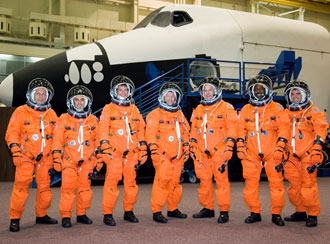
Update: Dec. 6, 2007--
NASA RESCHEDULES SPACE SHUTTLE LAUNCH
The Dec. 6 launch of NASA's space shuttle Atlantis has been rescheduled. The earliest date that launch will occur is Saturday, Dec. 8, at 3:43 p.m. EST but Space Shuttle Program managers will hold a Mission Management Team meeting Friday afternoon to discuss the issue and determine the steps necessary to start a new launch countdown.
The Dec. 6 scheduled liftoff was postponed because of a problem with a fuel cutoff sensor system inside the shuttle's external fuel tank. Two of the sensors failed and this fuel cutoff sensor system is one of several that protect the shuttle's main engines by triggering their shut down if fuel runs unexpectedly low. Launch criteria require that three of the four sensor systems function properly before liftoff. After the launch was cancelled and while the tank was being emptied, other sensors were being monitored and gave a false reading, stating they were "wet" when they were actually dry.
Launch date decisions will be announced later on Friday, Dec. 7.
MISSION STS-122: NASA'S SPACE SHUTTLE ATLANTIS IS AT LAUNCH PAD. CREW SCHEDULED TO LAUNCH ON DEC. 6, 2007
STS-122 is the 121st space shuttle flight, the 29th flight for space shuttle Atlantis and the 24th flight to the station.
Atlantis is targeted to launch Dec. 6 on an 11-day mission to the International Space Station. The shuttle's seven crew members will deliver the European Space Agency's Columbus Laboratory to the International Space Station and bring a new crew member to the station and return another to Earth. The attachment of the Columbus Laboratory is very important as it will expand the science capabilities of the International Space Station.
On Nov. 10, the space shuttle Atlantis was safely transported to the launch pad at NASA's Kennedy Space Center. The next major milestone for the upcoming STS-122 mission is the full launch dress rehearsal with the astronauts and mission ground crew members. That is scheduled from Nov. 18 to 20 at KSC. The shuttle crew will participate in various simulated countdown activities, including hands on equipment familiarization and various emergency training simulations.
Atlantis' crew members are Commander Steve Frick, Pilot Alan Poindexter and Mission Specialists Leland Melvin, Rex Walheim, Stanley Love, and Hans Schlegel and Leopold Eyharts of the European Space Agency. Eyharts will replace current Expedition 16 Flight Engineer Daniel Tani. Eyharts will return to Earth aboard STS-123, which is targeted to launch Feb. 14, 2008. Tani will return to Earth aboard Atlantis. He launched to the station with the STS-120 Discovery crew.
Click here for information about the STS-122 mission and crew.
*Aeronautics Competitions for High School and College Students*
The Fundamental Aeronautics Program of the Aeronautics Research Mission Directorate at NASA Headquarters announces a new aeronautics competition for high school and college students for the 2007-2008 academic year.
High school students are challenged to write a research paper to explain ideas for a future aircraft that could become the "DC-3" for cargo and passengers in the year 2058. Descriptions should be well-informed and include sections on fuel, environmental effects, noise levels, runway length and condition, operating costs, passenger and cargo loads, and service operations. Notice of intent for high school entries is due on *Dec. 15, 2007*.
College students are invited to design the next generation, 21^st -century, "DC-3"-type aircraft. Some of the design considerations include reduced environmental impact, reduced noise, daily operations on short runways, cost analysis for production and operation, passenger and cargo limits, structure and materials, and engines. Students should also briefly describe three valid scenarios for potential use of this vehicle in the year 2058. Notice of intent for college entries is due on *Jan. 19, 2008*.
Any U.S. student enrolled in an accredited high school, secondary school, or home school in the United States or its territories is eligible to enter the competition for cash prizes. Non-U.S. citizens and students in international locations can enter as well, but they are not eligible for cash prizes. Trophies and certificates will be awarded to each winner, regardless of citizenship. For complete details, visit:
* *
*21^st Century Explorer Podcast Competition*
What do you think is NASA's greatest exploration achievement in the past 50 years, and why? That is the question NASA is asking students for the Second Annual 21st Century Explorer Podcast Competition. Students will create an audio recording or video -- running one minute or less -- with their answer to the question.
The contest is open to U.S. citizens, ages 11 to 18. Entries will be judged on content, creativity, execution, clarity and overall impression. The 15 finalists in each format (audio and video) and each age category (ages 11-14 and ages 15-18) will be displayed on the contest Web site, where the public will vote for and select a "People's Choice" winner. Prizes will also be awarded for first, second and third place. Winners will be announced on the Web site Feb. 28, 2008.
Entries are being accepted now through *Jan. 4, 2008*, or when the first 1,000 entries in each category are received.
For more information, including tips for creating audio and video podcasts, visit:
GLASS CEILING SHATTERED FOR WOMEN! AND ANOTHER TO SHATTER ON OCTOBER 23!: WOMEN IN SPACE NEWS
POSTED OCT. 16, 2007
NASA astronaut Peggy Whitson arrived at the International Space Station (ISS). What's the big deal about that? Well she is making history as the first woman to command an ISS mission. (Finally! It's about time, I say! Reality follows fiction; the Star Trek TV show did it long ago!-gb)
The Expedition 16 crew was launched on Oct. 10, 2007 from the Baikonur Cosmodrome in Kazakhstan. They docked their Russian Soyuz spacecraft to the orbiting ISS on Friday, Oct. 12 at 10:50 a.m. EDT. The Expeditiion 16 crew is ISS Commander Peggy Whitson, Soyuz Commander and Flight Engineer Yuri Malenchenko and Malaysian Spaceflight Participant Sheikh Muszaphar Shukor.
Peggy Whitson officially makes history as the station commander after the traditional "change of command ceremony" on Friday, Oct. 19, at approximately 3:15 p.m. EDT. This ceremony will mark the formal handover of the station to Whitson, just days before the Expedition 15 crew members (Commander Fyodor Yurchikhin, Flight Engineer Oleg Kotov and Expedition 15 and 16 Flight Engineer Clayton Anderson) and Malaysian Spaceflight Participant Shukor depart.
"I think it's special that I get the opportunity to play that role," Whitson said when asked about being the first woman station commander. "But I think it's also special to have an opportunity to demonstrate how many other women also work at NASA."
Another female astronaut, space shuttle Discovery Commander Pam Melroy, will reach another milestone in late October when she and her crew arrive at the station. It will mark the first time two women have led space missions at the same time. (Discovery, shuttle mission STS-120, is currently scheduled to launch on Oct. 23.)
To familiarize themselves with station systems and procedures, Expedition 16's Whitson and Malenchenko will conduct more than a week of handover activities before the Expedition 15 members depart.
During Expedition 16, two crew members will perform three spacewalks during to prepare the station for the activation of the Harmony node. The Expedition 16 spacewalks also will prepare for the relocations of Harmony and Pressurized Mating Adapter-2, a docking port. (Harmony was named by students who participated in a NASA education research project.)
This is Whitson's second six-month rotation aboard the orbiting complex. She previously served as a flight engineer on Expedition 5 in 2002, when she became NASA's first station science officer, conducting 21 investigations in human and life sciences. During that mission, she also used the station's robotic arm to help add two truss segments to the station's backbone and performed a spacewalk to install debris shielding.
Whitson was born and raised in Iowa, where at an early age she was inspired by the men who walked on the moon. "I thought 'what a cool job!" She decided she wanted to fly in space after graduating from high school, which was the same year they picked the first set of female astronauts. Whitson knew she wanted to work for NASA, if not as an astronaut, then as a scientist. Whitson received a Bachelor of Science degree in biology and chemistry from Iowa Wesleyan College in 1981 and a doctorate in biochemistry from Rice University in 1985. From 1989 to 1993, Whitson worked as a research biochemist in the Biomedical Operations and Research Branch at NASA's Johnson Space Center in Houston. For the next several years, she held a number of senior positions within NASA until her selection as an astronaut in 1996.
When Whitson returns home in April 2008, she will hold yet another distinction, that of having spent more time in space than any other woman.
Click here for Whitson's biographical information.
Source: NASA RELEASE: 07-226
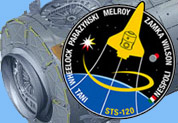
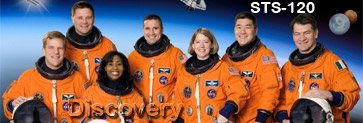
MISSION STS-120: NASA'S SPACE SHUTTLE DISCOVERY and CREW SCHEDULED TO LAUNCH ON OCT. 23, 2007
DISCOVERY TO MOVE TO LAUNCH PAD ON SEPT. 29: Discovery is targeted to roll out to Launch Pad 39A at NASA's Kennedy Space Center, Fla., on Saturday, Sept. 29, as preparations for the STS-120 mission move forward.
The space shuttle orbiter Discovery is targeted to lift off Oct. 23 on a 14-day mission to the International Space Station (ISS). This will be the 120th space shuttle mission. This shuttle mission will be only the second one to have a woman as Commander: Pamela A. Melroy.
The STS-120 mission is the 23rd mission to the ISS. During this mision the crew will add a module to the ISS that will serve as a port for installing additional international laboratories. The Harmony module will be the first expansion of the living and working space on the orbiting laboratory since 2001. The mission also will move the first set of solar arrays installed on the station to a permanent location on the complex and redeploy them.
Discovery's crew: astronauts Pamela A. Melroy, STS-120 commander; Daniel M. Tani, Expedition 16 flight engineer; George D. Zamka, STS-120 pilot; Douglas H. Wheelock, Scott E. Parazynski, Stephanie D. Wilson and European Space Agency's (ESA) Paolo Nespoli, all mission specialists.
Click here for information about the STS-120 mission and crew.
Click here for the most recent updates about the STS-120 mission.
Click here for NASA TV downlink information, schedules and links to streaming video.
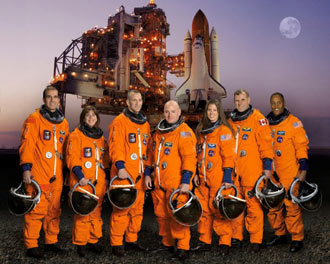
Click here for more information on STS-118, Space Shuttle Endeavour.
STS-118, Space Shuttle Endeavour
July 3, 2007
Excitement is building as we get closer and closer for this particular mission! Last week NASA moved this launch date--now scheduled for August 7, 2007. I have been busy working on a Launch Reunion for our group of NASA Space Ambassadors (SAs). We've been working and waiting a very long time for this upcoming mission--but no one has been working or waiting as long as Barbara Morgan.
We, the TIS-SAs, all feel a deep connection and need and want to be there to celebrate Barbara's perseverance, tenacity, talent and achievements. She is truly an amazing woman, a great teacher and close friend. We feel very deep emotions about this flight. This is our mission, too.
Barbara Morgan has gone far beyond "Teacher in Space Alternate" and "Teacher in Space Designee." In 1998 she was selected as an Astronaut Candidate, successfully completed her two years of that training to become an official member of the Astronuat Corps. She is a Mission Specialist as well as bearing the new title, distinction and honor of being the first Educator Astronaut. She won't be teaching lessons from space--she will be operating the robotic arm while the orbiter Endeavour is docked to the International Space Station. She will be working the Canada arm while the crews do construction to the ISS. (Not bad for an elementary school teacher, eh?)
FYI: Endeavour is the orbiter that was built to replace Challenger. Students across America did research and submitted their names based on classroom projects they participated in. (Many Vermont students as well were part of the "Name the Orbiter" project.) The TIS-SAs had the privilege of seeing Endeavour being built as part of one of our space education conferences so she's special to us as well for this mission. I've also had a chance to see her finished and rolled out from one building to another getting ready to fly a mission.
This mission, and Barbara's flight, is an example to students of the importance of keeping dreams, setting and working towards goals and persevering for what you believe is important.
For more information about the mission and Barbara Morgan, please see the links below:
NASA Shuttle Mission STS-118--currently scheduled for Aug. 7, 2007
2) Interview with Mission Specialist/ Educator Astronaut Barbara Morgan
3) Teachers in Space - NASA Space Ambassadors For more information about the Space Ambassadors (my affiliation) please see the article written by Space Ambassador Patricia Palazzolo that was published in AdAstra.
4) Click here for the Educators' Resource Page for STS-118.
My plan is to host professional development workshops for educators. There will be post-flight activities that can be done in your classrooms this fall. (Including the plant growth chamber and growing seeds flown on this mission.) Contact me if you have any interest.

08.03.07
NEXT DEPARTURE FOR MARS STANDS READY TO FLY
CAPE CANAVERAL, Fla. --
A NASA robotic explorer equipped to dig up and analyze icy soil on Mars sits atop a 13-story tall stack of rocket engines prepared for liftoff before sun-up on Saturday, August 4.A Delta II launch vehicle will carry the Phoenix Mars Lander into Earth orbit and, about 90 minutes later, give it the push needed to send it to Mars. A three-week period when planetary positions are favorable for this launch begins with an opportunity at 5:26:34 a.m. EDT on Aug. 4. A second opportunity the same day, if needed, will come at 6:02:59 a.m. EDT.
"We have worked for four years to get to this point, so we are all very excited," said Barry Goldstein, Phoenix project manager at NASA's Jet Propulsion Laboratory, Pasadena. "Our attention after launch will be focused on flying the spacecraft to our selected landing site, preparing for surface operations, and continuing our relentless examination and testing for the all-important descent and landing on May 25 of next year."
Phoenix will travel 422 million miles in an outward arc from Earth to Mars. It will determine whether icy soil on far northern Mars has conditions that have ever been suitable for life.
Studies of potential landing sites by spacecraft orbiting Mars led NASA to approve a site at 68.35 degrees north latitude -- the equivalent of northern Alaska -- and 233.0 degrees east longitude.
"Phoenix investigates the recent Odyssey discovery of near-surface ice in the northern plains on Mars," said Phoenix Principal Investigator Peter Smith of the University of Arizona, Tucson. "Our instruments are specially designed to find evidence for periodic melting of the ice and to assess whether this large region represents a habitable environment for Martian microbes." Phoenix uses a lander structure built for the 2001 Mars Surveyor mission.
Click here for additional information on Phoenix.
Click here for additional information on NASA's Mars program.
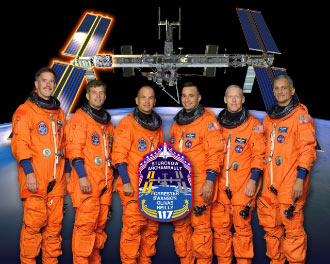
The crew of STS-117: Left to right are mission specialists James Reilly II and Steven Swanson, Commander Frederick Sturckow, Pilot Lee Archambault and mission specialists Patrick Forrester and John D. Olivas. Image credit: NASA
STS-117 Rescheduled to Launch on June 8, 2007
On April 13, NASA announced the new launch date of June 8, 2007 for mission STS-117. The external fuel tank was damaged by hail which caused the cancellation of the launch that had earlier been scheduled for March 15, 2007.
Technicians and engineers continue the repair work on the hail-damaged STS-117 external fuel tank, ET-124 and plan on using the repaired tank.
(This change of date means that mission STS-118 is now rescheduled to launch in August, 2007.)
Previous post about STS-117
Space Shuttle Atlantis with her crew of six astronauts are currently was scheduled to launch on March 15, 2007. This will be another mission to the International Space Station (ISS) for additional construction work. Among other things, they will be bringing an additional set of solar arrays to be added to the ISS.
The Atlantis crew will install a new truss segment, retract a set of solar arrays and unfold a new set on the starboard side of the station----all of which are very complicated tasks--especially when performed in a pressurized spacesuit, in micro-gravity, while orbiting around Earth. The crew will be using some new techniques and tools designed to help with this task, a direct result of lessons learned from two previous missions.
This is the 118th shuttle flight and the 21st ISS flight.
Additionally there is an interesting history tie in for this mission--to the year 1607. Read on--it's not a typo.
History Tie-In for Educators: "Exploration"
A nearly 400-year-old artifact (a cargo tag) from historic Jamestown will be flying aboard Atlantis during this mission.
Why? To honor early American explorers. Upon completion of the Atlantis space flight mission, the cargo tag will have logged more than 4 million miles during four centuries, traveling from England to Jamestown and round trip to the International Space Station.
WHAT: According to a NASA, the artifact is a metal cargo tag reading "Yames Towne." It was discovered at the bottom of a well during an archaeological dig at the site of James Fort on Jamestown Island, Virginia. This was the site of the first permanent English settlement in the Americas which was settled in 1607.
According to archaeologists, the tag is most likely a discarded shipping tag from a crate or a trunk arriving from England around 1611. "This artifact clearly marks Jamestown as a destination -- our nation's first 'address.' ", said William M. Kelso, director of archeology at the Association for the Preservation of Virginia Antiquities.
Additionally, two sets of Jamestown commemorative coins, authorized by Congress and recently issued by the U.S. Mint, also will fly aboard Atlantis.
History Extension Activities:
There are lots of related learning activities, projects, reading and research for your students to do related to "Exploration: the Past, the Present, the Future." Vermont Space Education Program (VSEP) is available to assist with professional development workshops and classroom programs.
"This exploratory shuttle flight connects our adventurous past with the innovation and continued intellectual curiosity that guides our future as we commemorate America's 400th anniversary," Virginia Gov. Tim Kaine said. "We embrace that future by contemplating Jamestown's pivotal role as the place where our nation's defining characteristics - democracy, free enterprise, cultural diversity and the spirit of exploration - took root."
"Remembering the spirit of adventure that led to the establishment of Jamestown is appropriate as this country works toward establishing a permanent outpost on another planetary body.", said NASA Langley Research Center Director Lesa Roe. NASAs program to return to the moon then venture to Mars and beyond continues the legacy of exploration and discovery initiated 400 years ago by America's earliest explorers.
Atlantis' crew for STS-117:
Commander: Frederick Sturckow, a veteran of two shuttle missions (STS-88, STS-105)
Pilot: Lee Archambault, making his first flight as the shuttle's pilot.
Mission Specialists: James Reilly (STS-89, STS-104) and Patrick Forrester (STS-105) will be making a return trip to the ISS. Steven Swanson and John Olivas, will be taking their first flight into space. Among other tasks, the Mission Specialists will be going on EVAs ("spacewalks") and using the robotic arms during the "outside" ISS construction work.
Click on the mission patch below for linked information about this mission.

THEMIS Mission Will Judge What Causes Highly Dynamic Aurora
NASA's THEMIS mission (THEMIS = Time History of Events and Macroscale Interactions during Substorms) is a 2-year mission to study the Northern Lights, how Earth's magnetosphere works and the Sun-Earth connection/ relationship. Five identical probes will follow and study the aurora borealis displays near the North Pole. THEMIS scientists will be investigating what causes the displays to change in intensity, ranging from subtle to highly dramatic effects and displays. NASA will launch (with an expendable rocket, not as a shuttle mission) the THEMIS instruments in February (currently scheduled no earlier than February 15, 2007). For more information on the science of auroras related to the mission, click here. For information related to the Delta rocket launch and mission features, click here.
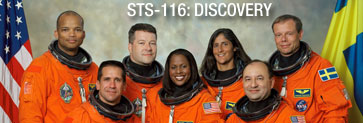
STS-116 Space Shuttle Launch Rescheduled for Saturday, December 9, 2006
Launch of Discovery is now scheduled for 8:47 p.m. EST Dec. 9, 2006. NASA managers postponed Thursday's, Dec. 7 space shuttle launch until Saturday because of low cloud cover. Mission managers believe weather conditions will improve for a Saturday launch attempt.
Dec. 7, 2006 Shuttle mission STS-116
A New Englander will be a crew member on the upcoming December Shuttle mission to the International Space Station. One of the astronauts, Sunita Pandya, a woman and a helicopter pilot, hails from Needham, Massachusetts. Read this feature article, written by Laura K. Meade, that also focuses on the power of teachers (specifically a sixth grade teacher) who is prominantly featured in the article published in the Boston Globe on Sunday, November 5, 2006.
LAUNCH COUNTDOWN BEGINS DEC. 4, 2006 FOR SPACE SHUTTLE DISCOVERY
NASA will begin the countdown for Space Shuttle Discovery's STS-116 mission at 11 p.m. EST Monday, Dec. 4, at the T-43 hour point. During this mission, Discovery's crew will rewire the International Space Station, bringing electrical power on line from solar arrays launched earlier this year. The countdown includes 27 hours, 36 minutes of built-in hold time leading to a preferred launch time at 9:35 p.m. on Thursday, Dec. 7. The launch window extends an additional five minutes. This mission is the 117th space shuttle flight, the 33rd flight for Discovery and the 20th U.S. flight to the International Space Station. STS-116 is scheduled to last 12 days with landing at about 4:35 p.m. EST on Dec. 19 at Kennedy. CREW FOR MISSION STS-116
Commander: Mark Polansky
Pilot: Bill Oefelein
Mission Specialist (MS1): Nicholas Patrick
Mission Specialist (MS2): Bob Curbeam
Mission Specialist (MS3): Christer Fuglesang (European Space Agency)
Mission Specialist (MS4): Joan Higginbotham
Mission Specialist (MS5up): Sunita Williams
Mission Specialist (MS5down): Thomas Reiter
Williams will remain aboard the station to begin a six-month stay. European Space Agency astronaut Thomas Reiter, aboard the station since July, will return to Earth on Discovery.
November 29, 2006
NASA GIVES 'GO' FOR SPACE SHUTTLE DISCOVERY LAUNCH STS-116
NASA senior managers today unanimously recommended launching the Space Shuttle Discovery on December 7, 2006. Commander Mark Polansky and his six crewmates are scheduled to lift off at 9:35 p.m. EST on the STS-116 mission, one of the most challenging flights to continue building the International Space Station. During the 12-day mission and three spacewalks, the crew will work closely with flight controllers at NASA's Johnson Space Center, Houston, to install a new segment of the station's girder-like truss and activate the station's permanent, complex power and cooling systems.
Click here for more information about the STS-116 mission, including images and interviews with the crew.
"NASA Quest 2005-06: Challenges Students to study Mars on Earth"
With the Space Shuttle Discovery's return to space this past July, interest in space exploration and human space flight has not waned-and continues to capture the interest of the public-and students. Barbara Morgan, former grade 2-3 teacher and now an astronaut, was the back-up for Christa McAuliffe on the ill-fated Challenger (the mission that Breslauer and the other 113 teacher finalists were being considered for.) Morgan is currently scheduled for a Shuttle flight to the International Space Station during 2006 (but that date and mission might change based on the evaluation of the Shuttle orbiters and the foam debris problems during the July 26 launch of Discovery.) Even if the Shuttles are grounded again, until their eventual planned retirement in 2010, there are many fascinating space education topics and related activities that can be explored in the classroom. There is literally something exciting happening every few weeks. Check out this site's calendar of "spacial events" with some suggestions for event-related topics of interest for the 2005-2006 school year. Educators can also join Gail's "Aurora Alert" e-list to receive a "heads up" for possible Northern Lights displays. (A related workshop with activities and resources related to the science content behind this amazing phenomena is available.) As NASA turns its attention to preparing for human travel back to the Moon and to Mars, there is much planning to be done. This fall, the NASA Exploration Systems Mission Directorate and NASA Quest will open the school year with a challenge to students, primarily in grades 5-8, to work with NASA scientists to design solutions to the problems under consideration. During October and November, students are invited to join NASA researchers and other leading scientists as they embark on a Mars analog study at California's Lassen Volcanic National Park. By studying snowfields in the park, scientists hope to learn more about the development of technologies needed to help understand and explore Earth's Moon and Mars. They will also learn about polar ice caps and the life that could possibly exist there. "This is a great opportunity for Vermont students to participate in live, interactive Webcasts with NASA scientists who are doing cutting edge, real time research to develop and test technologies in preparation for exciting future exploration that today's students will be seeing in their lifetimes. We will need to go back to the Moon and onto Mars for more research before human colonies are developed on lunar or planetary surfaces. Students will be able to participate in actual research while engaging in their own background reading and the research necessary to develop their own ideas and solutions to problems NASA is currently working on," said Gail Breslauer. "This is an experience that will help encourage the study of math, science, technology, and engineering, while Vermont's creative educators can also integrate many other subject areas into a thematic unit as time permits-and all of this fits in with the required learning standards." As the scientists determine where this fall's research site will be, journals will be posted online. During the month of September, a live introductory Webcast will take place from the Lassen Volcanic National Park, so students around the world can observe NASA scientists at work.
Click here for information about the NASA Quest Challenge on the Internet.
NASA CLEARS SPACE SHUTTLE DISCOVERY FOR LANDING
PERSONAL NOTE FROM GAIL:Wednesday morning, August 3rd, was an amazing sight to behold on my computer link to NASA TV while watching a live broadcast streaming in real time as I watched Astronaut Steve Robinson's space walk (EVA) as he was maneuvered in place by his crew members who were working the robotic arm attached to the International Space Station (ISS) as he performed the first ever "belly operation" to an orbiting Shuttle--while it was docked (attached) to the orbiting Space Station. I had my TV recording the televised images as I monitored my computer images and TV broadcast images getting NASA commentary and media commentary.Talk about team work, problem solving, planning, training, and excellent communication between all team members in space and on Earth! I was mesmerized, watching "helmet cam" and other various camera views of the Earth, the orbiter Discovery, the International Space Station, and more. Robinson gently tugged, or plucked, two of the belly tile's "gap fillers" that had jarred loose and were out of proper position to withstand the rigors of intense heat while going through Earth's atmosphere during re-entry for an Earth landing. I couldn't leave until both space walking astronauts were safely inside Discovery and were decompressing their spacesuits. Wow! What a great way to start my morning! And what good news for Discovery's crew and NASA team on Earth!
* * * * * * * * * * * * * * * * * * * * * * * *
Date: Thursday, August 4, 2005 6:00 pm
The Space Shuttle mission managers today completed their assessment of Discovery's fitness to handle the rigors of re-entry into the atmosphere."We have cleared Discovery to re-enter," said Wayne Hale, chairman of the Mission Management Team (MMT), during a news conference at NASA's Johnson Space Center, Houston.The MMT determined the Orbiter's heat shield and other systems are in good shape. They also decided a spacewalk is unnecessary to repair damage to a thermal blanket on Discovery's outer skin.Earlier this week, Discovery (STS-114) mission managers determined two components of the Shuttle's Thermal Protection System, tile and Reinforced Carbon-Carbon, were fit for re-entry and landing. Today, the MMT cleared the final element: thermal blankets. One blanket is slightly torn and billowing in orbit.The MMT considered the results of overnight testing at NASA's Ames Research Center, Moffett Field, Calif. Engineers ran samples of torn thermal blankets through wind tunnels at velocities many times faster than the speed of sound. Tests showed it was highly unlikely the blanket would tear off or strike the Orbiter. Other analyses showed the blankets would still protect Discovery from re-entry heat.Based on the analysis of the blankets and considering the risks of a fourth spacewalk, mission managers decided the torn blanket did not need repair. "We've assessed this risk to the very best of our knowledge and we believe the risk is small," Hale said.New imaging capabilities developed after the Space Shuttle Columbia accident allowed mission managers to see and analyze the torn thermal blanket. Data from the images were used to re-create blanket samples for the wind tunnel tests.Discovery is set to land Monday, Aug. 8 at NASA's Kennedy Space Center, Fla. The first opportunity for Commander Eileen Collins to land the Space Shuttle is at 4:46 a.m. EDT.Click for information about STS-114 on the Web.
(Source: NASA press release)
July 16, 2005 INTERNATIONAL SPACE STATION CREW TAKES A SOYUZ RIDE
TUESDAY The residents of the International Space Station (iss) will take a short ride in their Soyuz spacecraft on Tuesday, July 19. NASA TV will carry the trip live, starting at 6 a.m. EDT. Expedition 11 Commander Sergei Krikalev and Flight Engineer John Phillips will leave the Station at 6:35 a.m. EDT, Tuesday. They will undock the Soyuz capsule from the Pirs Docking Compartment and fly a few feet to re-dock on the Zarya Module at approximately 7:11 a.m. EDT. The re-docking will allow the crew to use the Pirs for a spacewalk in August. Krikalev and Phillips are in the third month of a planned six- month mission. On Aug. 16, Krikalev will surpass the record for most cumulative time spent in space by any person, having accumulated more than 749 days on six space flights. For those with satellite dishes: NASA TV is carried by MPEG-2 digital signal accessed via satellite AMC- 6, at 72 degrees west longitude, transponder 17C, 4040 MHz, vertical polarization. It's available in Alaska and Hawaii in analog through Return to Flight on AMC-7, at 137 degrees west longitude, Transponder 18, at 4060 MHz, vertical polarization, audio at 6.8 MHz. Click here for information about NASA TV on the Web.
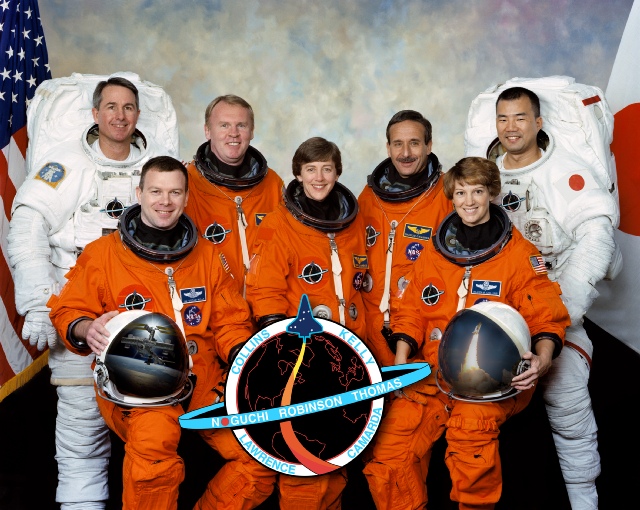
Eileen Collins (second from R).
STS-114 RETURN TO FLIGHT:
Discovery Space Shuttle mission Friday, July 15: Space Shuttle Program Deputy Manager Wayne Hale has announced more troubleshooting is necessary to determine why an Engine Cut-Off (ECO) sensor gave intermittent readings during Wednesday's attempted launch of Space Shuttle Discovery. Hale predicted more information could be available Friday, after NASA and contractor engineering teams across the country have had more time to analyze data and come up with a more definitive plan. The STS-114 crew will remain at Kennedy Space Center for the time being, continuing preparations, repeating some training and even taking some time to relax.
MARS MISSIONS NEXT STEP FOR EXPLORING MARS
NASA's launch opportunities will begin Aug. 10, 2005, for the agency's next mission to Mars. NASA's Mars Reconnaissance Orbiter (MRO) is a robotic spacecraft, and it will examine the mysterious red planet in unprecedented detail. This is an important step in a long-range vision for exploring Mars. The MRO will use six instruments to study the Martian surface, profile the atmosphere and probe the subsurface of the planet. Key objectives are improved knowledge about what happened to Martian water and evaluation of potential landing sites for future missions. ###
EARTH: OUR HOME PLANET NASA SATELLITES MEASURE AND MONITOR SEA LEVEL
July 7, 2005 Although scientists have directly measured sea level since the early part of the 20th century, it was not known how many of the observed changes in sea level were real and how many were related to upward or downward movement of the land. Now satellites have changed that by providing a reference by which changes in ocean height can be determined regardless of what the nearby land is doing. With new satellite measurements, scientists are able to better predict the rate at which sea level is rising and the cause of that rise. NASA scientists and partner researchers now are able to measure and monitor the world's waters globally in a sustained and comprehensive way using a combination of satellite observations and sensors in the ocean. By integrating the newly available satellite and surface data, scientists are better able to determine the causes and significance of current sea level changes. NASA works with agency partners such as NOAA and the National Science Foundation to explore and understand sea level change. Critical resources that NASA brings to bear on this issue include such satellites as: -- Ocean TOPography Experiment (TOPEX/Poseidon), which uses radar to map the precise features of the oceans' surface; -- Jason, which measures ocean height and monitors ocean circulation; -- Ice, Cloud and Land Elevation Satellite (ICESat), which studies the mass of polar ice sheets and their contributions to global sea level change; -- Gravity Recovery And Climate Experiment (GRACE), which maps Earth's gravitational Field, allowing us to better understand movement of water throughout the Earth. "It's estimated that more than 100 million lives are potentially impacted by a one-meter increase in sea level," said Dr. Waleed Abdalati, head of the Cryospheric Sciences Branch at NASA's Goddard Space Flight Center, Greenbelt, Md. "When you consider this information, the importance of learning how and why these changes are occurring becomes clear," he added. "Now the challenge is to develop an even deeper understanding of what is responsible for sea level rise and to monitor for possible future changes. That's where NASA's satellites come in, with global coverage and ability to examine the many factors involved," said Dr. Laury Miller, Chief of the National Oceanic and Atmospheric Administration (NOAA) Laboratory for Satellite Altimetry, Washington. Click here for more information about sea level change on the Internet.
Sorting It Out
NASA Administrator Michael Griffin and Space Shuttle Program managers spoke with reporters in a press briefing from Kennedy Space Center. NASA managers continue to analyze the issue with the Engine Cut-Off sensor on Space Shuttle Discovery's External Tank. The sensor protects an orbiter's main engines by triggering them to shut down in the event fuel runs unexpectedly low. For the moment, no new launch date for Discovery has been set. During the briefing, Space Shuttle Program Deputy Manager Wayne Hale said the most optimistic possibility for the next launch attempt could be as early as this Saturday, July 16. Additional information will be posted as it becomes available.
Return to Flight Mission (STS-114)--Space Shuttle Orbiter Discovery
Commanded by Eileen Collins, first woman Commander (previous first woman to serve as Pilot on a Shuttle mission.) Click here for the latest, detailed information about the Space Shuttle Discovery's Return to Flight Mission (STS-114) on the Web. LAUNCH DAY - Wednesday, July 13, 2005 Live coverage is available on NASA TV on the Web. 5:30 a.m. NASA TV live launch programming begins/tanking activities commentary 10 a.m. Live launch commentary begins 3:51 p.m. Launch Launch + 1 hour: Press Conference: Michael Griffin, NASA administrator; William Readdy, associate administrator, Space Operations; Bill Parsons, Shuttle program manager; Mike Leinbach, Shuttle launch director
NASA TV is carried on an MPEG-2 digital signal accessed via satellite AMC-6, at 72 degrees west longitude, transponder 17C, 4040 MHz, vertical polarization. It's available in Alaska and Hawaii on AMC-7, at 137 degrees west longitude, transponder 18C, at 4060 MHz, horizontal polarization. A Digital Video Broadcast compliant Integrated Receiver Decoder is required for reception.
Subject: A STATEMENT FROM THE COLUMBIA FAMILIES ON NASA'S RETURN TO FLIGHT
Date: Tue, July 12, 2005 9:50 am Launch Window: July 13-31, 2005 (Current scheduled opportunity for launch) July 12, 2005 NASA NEWS RELEASE: 05-180 A STATEMENT FROM THE COLUMBIA FAMILIES ON NASA'S RETURN TO FLIGHT The following is a statement from the families of the Space Shuttle Columbia mission STS-107: "As NASA prepares to launch the Shuttle Discovery, we, the Columbia Families, would like to show our support for the STS-114 crew and all the dedication and talent of those who supported this Return to Flight effort. We have had two and one half years to reflect daily on the loss of our loved ones as the Shuttle Columbia (STS 107) broke apart over Texas on February 1, 2003. "In the aftermath of the Columbia tragedy we saw our nation's space program reinvent itself. The extraordinary efforts of local, state and national organizations involved in the recovery effort, the Columbia Accident Investigation Board, the Return to Flight Task Group and all the NASA and aerospace industry workforce implementing the Return to Flight effort have clearly done an exemplary job in defining and reducing the technical risk as much as possible. As the families of Apollo 1 and Challenger before us, we grieve deeply but know the exploration of space must go on. We hope we have learned, and will continue to learn, from each of these accidents, so that we will be as safe as we can be in this high risk endeavor. "As important as solving the technical risk is, we must be vigilant to ensure the organizational and cultural issues that contributed to Apollo, Challenger, and Columbia are forever remembered. Under the leadership of the new NASA Administrator, we have every confidence that the sacrifice of our loved ones and those that preceded them will be realized for the benefit of all humankind.
"Godspeed Discovery."
This page last updated July 10, 2011
Vermont Space Education Program
Space Lady Enterprises
PO Box
550 · Moretown, VT 05660
Phone: 802-496-3795 · Fax: 802-496-3765
gbres@madriver.com
www.VtSpaceEducation.org
All
photos, art & content copyright © 2003-2011 VSEP/SLE
All rights reserved. No photo, drawing, or text may be reproduced in
any form without written consent.
Written
consent is necessary before linking this site to yours!
Please send your requests to: gbres@madriver.com or
VSEP,
PO Box 550, Moretown, VT 05660
